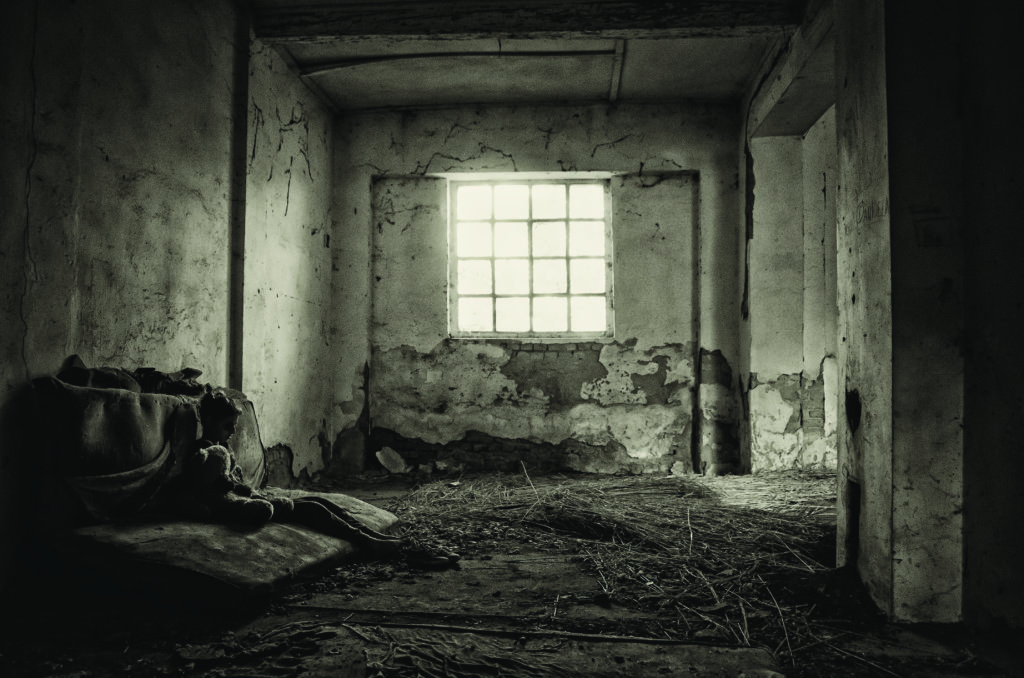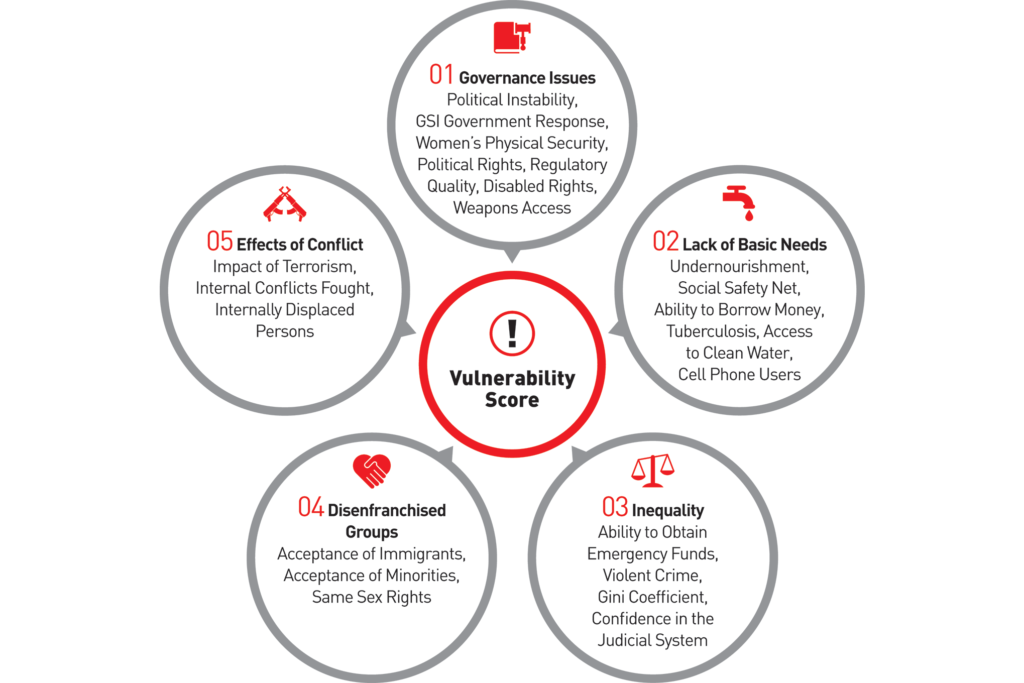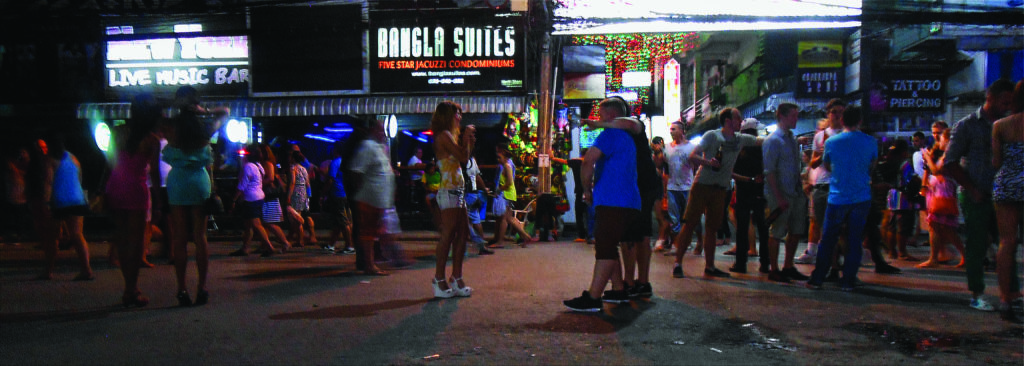RECOIL OFFGRID Survival Human Trafficking: Hidden in Plain Sight
In This Article
“We are like a meal … when everyone’s done eating, into the dumpster we go, and nobody gives a sh*t.” This quote came from a 14-year-old girl who’d been trafficked for sex and later committed suicide by walking onto a freeway at night. Not only should this quote impress upon you this experience’s effect on the human spirit, but also the reality that you might see someone like her being trafficked every day without realizing it. It’s a world of psychological shackles.
In order to lift the veil of secrecy surrounding human trafficking, we interviewed several experts on the front lines. We hope to help you better understand how it operates and improve your ability to recognize it. In spite of what many believe, no one is immune to its reach, and it can happen in any community. As technology advances, so too does its ability to infiltrate people’s lives and exploit their vulnerabilities. It’s a worldwide, multi-billion-dollar business, and those involved will stop at almost nothing to protect their cash flow.

Human trafficking is a type of slavery involving the illegal exploitation of a person. In essence, it’s been around for centuries, but the globalization of commerce, a thriving sex trade, and diversification of information sharing have also contributed to the growth of this form of enslavement. Human trafficking is different than “human smuggling,” which is helping someone illegally cross a border. In order to understand how it works, we must first define it according to the United States Criminal Code. The U.S. Department of Justice website states the following:
“Human Trafficking is a crime that involves exploiting a person for labor, services, or commercial sex. The Trafficking Victims Protection Act of 2000 and its subsequent reauthorizations define human trafficking as:
A) Sex trafficking in which a commercial sex act is induced by force, fraud, or coercion, or in which the person induced to perform such act has not attained 18 years of age; or
B) The recruitment, harboring, transportation, provision, or obtaining of a person for labor or services, through the use of force, fraud, or coercion for the purpose of subjection to involuntary servitude, peonage, debt bondage, or slavery. (22 U.S.C. § 7102(9)).
Human trafficking crimes, which are defined in Title 18, Chapter 77, focus on the act of compelling or coercing a person’s labor, services, or commercial sex acts. Coercion can be subtle or overt, physical or psychological, but must be used to compel a victim into performing labor, services, or commercial sex acts.”
The Polaris Project, a nonprofit nongovernmental organization (NGO) dedicated to fighting human trafficking, has identified 25 types of modern slavery. The two biggest categories of human trafficking are sex trafficking and forced labor, which also overlap. The Global Slavery Index (GSI) provides statistics on countries’ level of trafficking, vulnerability to it, and governmental response rating. According to the GSI, in 2016, there were an estimated 40.3-million people in modern slavery, 15.4 million of whom were in forced marriage and 24.9 million of whom were in forced labor.
The GSI reports that in 2016 the top five products at risk of involvement with modern slavery are:
1. Laptops, computers, mobile phones
2. Garments
3. Fish
4. Cocoa
5. Sugarcane
Other industries known to rely on slave labor include mining, restaurants/food service, landscaping, construction, cigarette factories, and bricklaying, just to name a few. According to a study done by the Polaris Project, the top three areas of labor trafficking in the U.S. for 2018 were:
1. Domestic work
2. Agriculture and animal husbandry
3. Traveling sales crews
In other words, many of the goods and services you take for granted may be provided by people forced to work against their will for little or no money. When was the last time you investigated the employment conditions of the companies that make the products you buy and what (if any) standards they’re held to?
There are many companies, both for profit and nonprofit, that work to evaluate and provide certifications for various products cultivated and manufactured with humane standards, but there’s no universal standard that all countries must comply with. In addition, many products rely on components being manufactured in many different countries, all with their own cultural norms and labor practices. The Minderoo Foundation’s Walk Free initiative, which also produces the GSI, is working to raise awareness of this ongoing problem to help bring about change.

Sex trafficking is frequently confused with commercial sex acts. Anyone under the age of 18 involved in a commercial sex act is considered a victim of human trafficking. The average age a child enters sex trafficking is 15. This crime has been reported in all 50 states, and 99 percent of all buyers are male, according to a 2018 report by Demand Abolition. The Polaris Project lists these as the top three cases for sex trafficking in the U.S. for 2018:
1. Escort services
2. Residence-based commercial sex
3. Pornography
Victims of labor trafficking are also often used in conjunction with sex trafficking. For instance, a victim may fall into the hands of a trafficking setup where she’s forced to wash dishes during the day and perform sex acts at night. Venues and industries known to be commonly associated with sex trafficking include hotels/motels, spas/massage parlors, health and beauty salons, bars, and strip clubs.
“I’ve seen everything imaginable from restaurants, hotels, and hardware stores be fronts for sex trafficking,” says Bruce Ladebu, founder of Children’s Rescue Initiative, a movement actively rescuing human trafficking victims around the world.
“We were doing a rescue overseas and there were a few young girls, around 8 or 9 years old, being trafficked out of a restaurant. We sent an operative who knew the language and another guy who’s a combat vet in there to act like customers. They made observations and decided to try and make a purchase. He offered to buy a girl, but didn't put money down. The woman who was working there said, ‘We don’t know you.’ That was enough to realize they were in the business but had customers that were already approved and weren’t going to make a sale to someone they didn’t know, so they’re pretty crafty. He then came out, told the team, and the team went in and rescued two little girls that were being rented out daily.”
Other forms of trafficking have been reported to include illicit adoption, mail-order brides, child soldiering, organ harvesting, and even satanic rituals linked to known traffickers like the infamous West Coast street gang, MS-13.

People often assume that human trafficking is a very sudden, violent act where someone is snatched off the street. Although random abductions by individuals unknown to the victim happen, grooming through social engineering is more common. Predators assess victims to find some kind of vulnerability. This is prevalent because a victim who has been kidnapped usually triggers a search. No one will search for someone in plain sight who’s secretly being blackmailed. It can happen anywhere from the internet to malls to schools. Manipulation can be slow, methodical, and calculated. Unlike drugs where a finite amount is sold and consumed once, trafficked victims can be sold repeatedly, depending on their desired use.
A pimp is the same as a trafficker; they span all age groups, races, genders, and socioeconomic backgrounds. While street gangs, larger mafias, and decentralized networks are frequent culprits, trafficking is also largely perpetrated among individuals within their own social circles. Traffickers also often collaborate internationally. Victims are constantly relocated within their own countries and overseas because of the unremitting demand for new ones, as well as to avoid detection. Anything from hospitals to shipping and trucking services have been used as a link in the trafficking chain. Individuals with access to private transportation can move about virtually undetected.
“In sex trafficking, there’s not necessarily a hierarchy,” says Jeff Tiegs, COO of Guardian Group, a counter-trafficking organization that relies on former military special operations, law enforcement, and intelligence community professionals to disrupt sex trafficking in the U.S. “Younger pimps are part of the pecking order and have often been mentored by older pimps, but then there’s just a social network that everyone has. When a trafficker is making a ton of money, who’s laundering it for them? Where’s he putting it? Who’s selling him cars paid for with cash and no other requirements? One of the devious tactics of a trafficker is he will deliberately get a victim pregnant, and they’ll have the child. He’ll hold that child basically for ransom while the girl is out working. So who’s watching that child? His sister, aunt, or mom maybe? There is, in effect, a network idea, but it’s much more societal.”
The profitability of this industry also allows access to resources many law enforcement agencies can’t match. Traffickers rely on anything from burner phones to secured texting on encrypted networks to stay off the radar. “What’s happening now, because there’s so much money to be made, is we’re seeing pedophiles and abductors become far more sophisticated. There are people who get paid a lot of money and have the same capabilities as Tier 1 Operators,” says Bazzel Baz, former CIA Paramilitary Operations Officer and president of Recovery of Children, an NGO that rescues trafficked children. “They know how to conduct surveillance, counter-surveillance, target, listen in, observe, and extract without any footprint contamination.”
Here are some examples of how people are deceived and can potentially become victims:

The internet isn’t only a black market for buying and selling victims, it’s also the number-one place traffickers find possible targets. Social media, apps, music-sharing platforms, and even interactive video games are frequent methods of prospecting and recruitment. They change constantly and many parents are either unaware of or don’t believe that these environments offer potential exposure to predators.
Backpage.com was at one time a major repository for buying and selling sex until it was removed. However, there’s no shortage of escort and classified sites with ads for sex or labor hidden under a “jobs” section, or in personal sections such as “friends looking for friends.” Many of these sites are managed by overseas companies outside the jurisdiction of U.S. law. Dating sites are also commonly explored by traffickers to find unsuspecting users just looking for a love interest and for posting ads of trafficked victims.
Internet ads are often written in brevities that most viewers are oblivious to. While references like “new to town,” “fresh,” or certain emojis like a cherry can often be indicators, descriptions have become increasingly esoteric.
“It’s coded now. You have to understand the language — sadly, most law enforcement doesn’t. We’ll help interpret that for them and look at an ad to decipher what it means. Something like a 15-year-old girl who’ll be at a certain hotel at a certain time and that’s where you need to go if you want to have sex with her,” Baz says. “Here’s an example: you may see an ad for a ‘2001 Volkswagen with a great set of wheels, small headlights, and brown in color.’ Wheels could be a metaphor for legs, small headlights meaning small breasted, and brown meaning complexion, like dark Asian, African American, or Latina.”
In the digital age, targeting victims is easier than you think. “Traffickers look for children who don’t have a strong father figure in the home and are vulnerable. A lot of it’s through online interaction with a predator pretending to be a child of the opposite sex and same age,” says Craig Sawyer, former Navy SEAL and founder of Veterans for Child Rescue, a nonprofit organization that raises awareness and rescues children from trafficking.
“For instance, if an older man wanted an 11-year-old boy, he might pretend to be an 11-year-old girl who’s new to his school, flirt with him, share some pictures of a girl that are sexual in nature to substantiate the claim, and ask for an in-person meeting. They may also ask the child being targeted for explicit pictures or videos of their own as leverage. That way, after photos or videos are sent, if the child doesn’t continue to reciprocate or agree to their demands, they can threaten to expose, humiliate, and begin blackmailing them. Those photos and videos may then also be sold online. Many children don’t know what exactly these apps do and that they can also allow predators to geo-locate them.”
Traffickers use social media to find certain personalities and profiles to try creating relationships and build rapport as a confidant. They’ll look at posts to gauge the individual’s overall susceptibility, self-esteem, if they’re vocalizing unhappiness at home, and other personal information they can persuade them to divulge. Many will often take the lover-boy approach, also known as a “Romeo Pimp,” using romantic pretenses to date for a few months. This builds a false sense of security. They’ll work to create emotional attachment, entice the potential victim with flattery and gifts, and facilitate possible financial dependency. Ultimately, it’ll become a gradual breaking down of that individual’s will to separate them from friends and family and force them into prostitution or other illicit activities using threats, extortion, and violence.
“Victims have been brainwashed into thinking it’s their idea, but they’ve been coached how to post ads. Someone is taking them to these rendezvous, and is in charge,” says Theresa Flores, a trafficking survivor and founder of The SOAP Project. “It’s very similar to being in a cult. If she has a pimp which could be a ‘boyfriend,’ then she’s being trafficked. She might think she’s doing it to help her boyfriend, but what if she stops bringing home money? She has someone blackmailing and threatening her. That’s the majority of the cases.”

Another example is ideological recruitment. ISIS operates heavily on social media. Disenfranchised individuals have often been compelled by terrorist groups to join a cause they’re tricked into believing is altruistic. Through social networks, they can see who’s an easy target for conditioning with propaganda. The strategy is to divide and conquer. Conversations and steady, methodical indoctrination to isolate them from others who may interfere with the brainwashing is then followed by an invitation and possible paid travel to areas where they’re alone and unable to escape. The initial promises of taking up with a benevolent organization can then culminate in rape, torture, and videotaped execution. They don’t know the language of wherever they’ve been brought, the laws, and end up falling for deception very easily.
Traffickers often pose as recruiters for free education or job placement, both abroad and in the U.S. “We just had a team come back from intelligence gathering in another country where we’d heard 80,000 girls had gone missing over the last year,” Ladebu says. “We found out the government was behind some of it. There were employment centers where a young girl would go in looking for work. They’d promise these girls jobs in other countries and give them documentation to show they were 18 and could travel legally. We discovered some of these operations were for organ harvesting, sex trafficking, and some of it was for labor slavery. We verified all this.”
In destitute countries with high unemployment, government officials and law enforcement may also be involved in the trafficking operations. The average citizen looking for a better life has little to no ability to vet businesses that are fronts for trafficking. Traffickers flock to regions where children have been separated from their families by natural disasters or conflict to abduct children.
“I read a story recently where a trafficker offered poor kids bicycles, and when they’d go to get it, they’d lure them into an alley where they were abducted,” Ladebu says. “I’ve even heard of kids being taken by traffickers offering free food. That’s more common in overseas countries.”
In-person abduction can encompass spotters who may observe an individual who fits a certain profile through group homes, film production companies, daycares, drug rehabs, and shopping centers. As depicted in the movie Taken, it’s not unheard of for scouts to be at an airport, be on the same flight, or communicate with someone at the arrival destination about a potential target they’re watching.
“One thing I’ve learned from my work and those I work with is once a girl is abducted, she’s abused very quickly and for quite some time to break down her will and then put to work. A lot of times they’re given drugs to decrease their resistance,” Ladebu says.
Trafficking is also done by family members and people familiar to the victims. In impoverished countries, it’s common for families to sell a child for anything from slave labor to child soldiering. However, familial trafficking in the United States is also prevalent. “We have a young lady who got her master’s degree in social work and her dad was a Mason. My family was in Masons too, so it’s not specific to them, but her father trafficked her through all the Masons up in Michigan, so trafficking through family is big,” Flores says.
There’s a difference between sex work and human trafficking. “Only a small percentage of the whole prostitution population is doing it voluntarily,” Flores says. “I’ve had many conversations with those women, and they’ll tell you that everyone who’s doing it by choice now was trafficked as a kid. At some point as a minor they were forced to have sex with someone while someone else benefitted from it. It becomes trafficking when someone else is benefitting. If you have a 15-year-old and she’s having sex with someone for money, it’s never because she wanted to do it.”
“Prostitution in and of itself is like pornography in the fact that it has willing and non-willing participants,” Ladebu says. “For a lot of women who are prostitutes, in all outside appearances it may look like they’re willing, but in actuality they’re being forced. There’s a lot of crossover between the two. Prostitution can be a cover. In places where there’s legalized prostitution it’s much easier to hide sex trafficking. No one will go investigate it because it’s legalized.”
Although the battle rages on about the legalization of prostitution, ask any human trafficking advocate or survivor about the catastrophic effects it’d have on society and you may rethink your position on the matter. “You’d essentially be sending the message that it’s OK to sell people,” Flores says. “It’s not just that she could sell herself and not get in trouble; you’d also now make it legal to sell someone else. Why did we just fight slavery all these years and let all these people die in the Civil War? All that would be for nothing because it’s legitimizing slavery and financially benefitting off another person. Someone can still be sold who doesn’t want to be, but nothing would happen to the people behind it. There’s nothing good about that idea.”
Pornography is linked in several different ways. One survivor told Exodus Cry that she was trafficked into porn at age 14, and brutally abused by adult men and women on set for the next three years. She attests that this isn't an uncommon practice in the porn industry, with countless complicit producers and distributors. Many sites offer user-generated content where nothing is required for verification. It’s very easy to upload anything and be anyone. Because there are genres known as “rape porn,” it’s very difficult to tell if it’s consensual and being acted, or if it’s being done against someone’s will and possibly using a minor. “There are even live-streaming services that will allow anyone who pays to dictate torture specifics and mistreatment of children,” Sawyer says.

According to the GSI, its Vulnerability Model “is built on statistical testing and processes to identify the factors...
We have a tendency to dismiss questionable behavior as something innocuous. Being cognizant of the risk factors or possible warning signs of trafficking is crucial. Any drastic behavioral changes, loss of interest in academics or hobbies, STDs, unexplained injuries or sums of money, and sudden change in dress of any child should be looked into. While it could be a result of anything from bullying to drug use, there have been many cases of a child being trafficked while the parents were unaware.
Certain tattoos can be used to indicate ownership by a trafficker/pimp. Symbols such as bows, dollar signs, diamonds, roses, crowns, or someone’s name have all been associated with ownership. Anytime there are large public events, an element of crime will congregate there. Major sporting events, conventions, and tourist destinations are known to attract large concentrations of trafficking. Children seen being regularly brought in and out of hotels, rental homes, Airbnb’s, and drug rehabs are red flags.
“Look for specific behaviors of discomfort. Avoiding eye contact, making themselves appear smaller, and possibly clothing that doesn’t match the setting, context, or area,” says Yousef Badou of Emergence Disrupt. “Oftentimes you’ll see handlers moving women back and forth, so you might see behavior or interaction where the woman won’t be able to speak to anyone or, if you ask her a question, the escort might answer for her. Not being able to speak, not having physical access to passport or travel documentation, those are all possible behavioral indicators of trafficking.”
“It can look like a lot of different things such domestic abuse, child abuse, etc. A lot of times they’ll just get called a bad kid,” Flores says. “Among minors, they’ve changed their dress, friends, and their behavior from happy-go-lucky to withdrawn and jumpy, falling asleep a lot, running away from home, and coming home with things the parents know they didn’t buy them. They could excuse that away by saying someone’s letting them borrow it, but it’s hard to know. It’s crazy the things that survivors tell you of how obvious it was, like a kid who was seen hanging out around a hotel a lot, but yet nobody said anything. Why would a kid be hanging around a hotel a lot?”
If you suspect you’ve witnessed a possible instance of human trafficking, see the resources listed at the end of the article such as the Human Trafficking Hotline, Polaris Project, and the Department of Homeland Security’s contact info to report a crime. Notify law enforcement as well. Don’t try to be a hero by intervening on your own — just try to be the best observer you can. Get descriptions and photos of the people involved, clothing, tattoos, vehicles, flights being boarded or disembarked from, and license plates. Do it discreetly. Notifying owners of that establishment or organization runs the risk of making the wrong people aware because they may possibly be in on it.
Ask questions. Strike up a conversation to test the response to see if you can detect if someone you suspect is being trafficked seems in distress or fearful. If they’re hyper vigilant and protective of their “parent,” use common sense and discretion: “Are these your parents? Are you OK? Do you need help?”
There are many reasons why the conviction rate of perpetrators is low. It’s difficult to intervene before a law has actually been broken. The fact that law enforcement is under-resourced, under-trained, and underfunded to keep up with it all allows the criminal component to operate with impunity. Jurisdictional issues and poor communication between agencies only exacerbates the problem. Victims often won’t report crimes or testify because they’re afraid of deportation or retaliation against them and their families. When you add to that inadequate funding for legal defense, shame, stigmatization, lack of knowledge about services, and an inability to recognize their own needs, it equates to a lot of people feeling fearful of coming forward.
Many also often ask, why victims won’t just leave the life. “It’s a whole process of submission both mentally and physically. Sometimes they do things to victims that I didn’t even do to my worst enemies as an interrogator for the CIA,” Baz says. “You’re breaking down someone’s will to be able to think on their own.” Victims often suffer Stockholm syndrome, PTSD, and brainwashing to believe it’s their fault, that no one is looking for them, or that no one will believe their story if they go to the police.
“I do presentations all over. A lot of people don’t believe it exists,” Ladebu says. “I can’t tell you how many people tell me they’ve never heard of human trafficking or they’re shocked that there’s more slaves today than at any time in history. A lot of people check out emotionally. It overwhelms them to think about what’s going on if it’s not affecting them personally.”

It relies on us as a society as well to take action. Contact your local politicians about tougher penalties on convicted traffickers, schools and colleges about awareness programs, and businesses where trafficking often occurs, such as hotels, about staff training to improve their ability to recognize it. While supporting legislation is a start, at the end of the day you vote with your money. Do your research and boycott companies that create products using inhumane conditions.
Within your own family, be very present in your children’s online activity. People can pretend to be whoever they want over the internet. If your child disappeared one day, would you have the ability to access and view the chat logs on platforms they’ve been using for any evidence of possible deception? Know who your children are talking to and how by having an open, participatory discussion about what they’re using to communicate so you can create your own accounts to monitor what’s going on. It’s not being invasive; it’s being smart.
“The penalty for these crimes is not stiff at all. When was the last time you saw someone get the death penalty for molesting a 12-year-old girl?” Baz says. “It’d blow your mind to find out the level of corruption within the ranks of our own law enforcement. This isn’t the case across the board with our law enforcement brothers and sisters, but what we do find is the surprisingly high level of corruption within the ranks that seems to never go away. We haven’t had one victim under 18 that has not testified that many of her clients are law enforcement officers.”
According to Profits and Poverty: The Economics of Forced Labour, a 2014 publication produced by the International Labour Organization (ILO), commercial sexual exploitation and forced economic exploitation earns $150 billion in illegal profits annually. ILO estimated that there were 21-million people being trafficked for these purposes as of 2012. Ask yourself why this topic isn't discussed in the news cycle on a recurring basis.
“We’re just trying to identify the girls, help them get out of the game, and help bring these traffickers to justice,” Tiegs says. “Rarely are we looking at holding others accountable like hoteliers looking the other way. That’s a growth industry for all of us. When we arrive at that place where people are truly paying the price for aiding and abetting the trafficking of minors, we’ll see a real change in the country.”
Risk Factors/Indicators
www.missingkids.org/theissues/trafficking#riskfactors
www.dhs.gov/blue-campaign/indicators-human-trafficking
Reporting a Crime
Further Information
www.dol.gov/agencies/ilab/our-work/child-forced-labor-trafficking
Statistics
www.ilo.org/global/topics/forced-labour/lang–en/index.htm
Bazzel Baz | recoveryofchildren.org
Theresa Flores | www.soapproject.org
Bruce Ladebu | thechildrensrescue.org
Craig Sawyer | www.vets4childrescue.org
Jeff Tiegs | guardiangroup.org
 STAY SAFE: Download a Free copy of the OFFGRID Outbreak Issue
STAY SAFE: Download a Free copy of the OFFGRID Outbreak Issue
No Comments